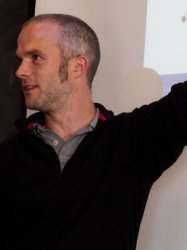BibTex format
@article{Melvin:2018:10.1002/qj.3268,
author = {Melvin, T and Benacchio, T and Thuburn, J and Cotter, C},
doi = {10.1002/qj.3268},
journal = {Quarterly Journal of the Royal Meteorological Society},
pages = {900--916},
title = {Choice of function spaces for thermodynamic variables in mixed finite-element methods},
url = {http://dx.doi.org/10.1002/qj.3268},
volume = {144},
year = {2018}
}

